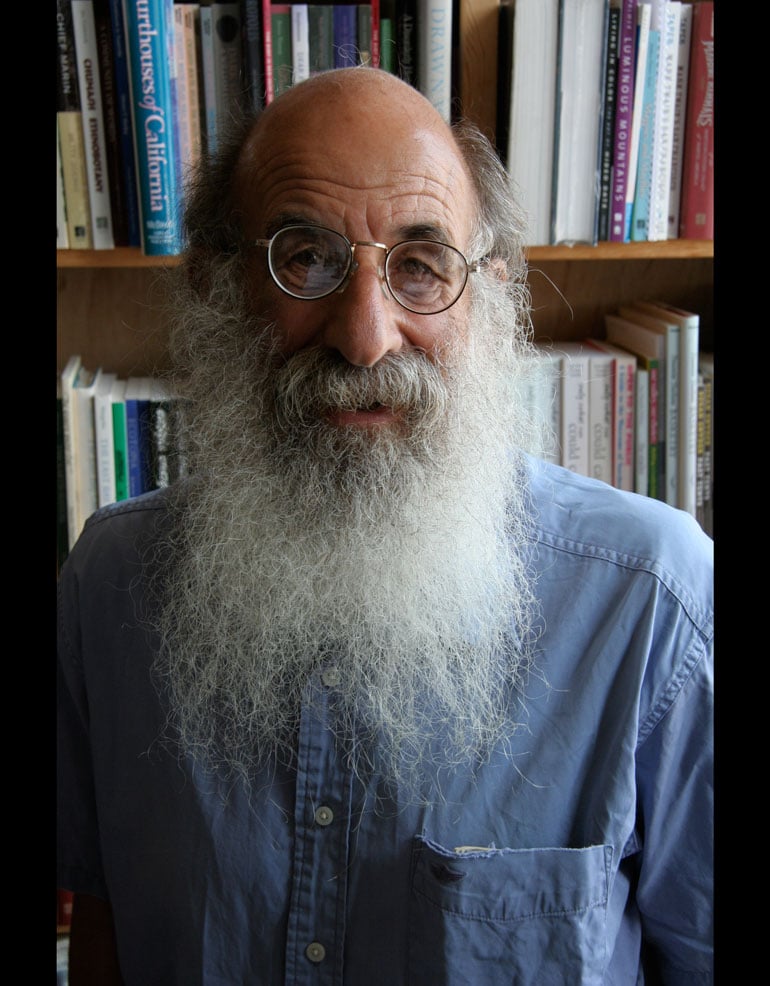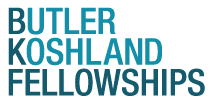
Continuing the Search for Beauty….
Congratulations, Malcolm! In 2016, BKF Mentor Malcolm Margolin retired from Heyday, the nonprofit publishing organization he founded in 1974. We now join him in celebrating the creation of a new organization, California Institute for Community, Art & Nature, where he will serve as the Executive Director. He describes their work:
The California Institute for Community, Art, & Nature (California ICAN) is an oasis for the human spirit, a sanctuary for ancient wisdom, a greenhouse for nurturing fresh ideas, and a boot-camp for visionaries who want to translate ideas into action. Through intimate gatherings, large public conferences, exhibitions, books, articles, and digital media, we provide inspiration and support to those fighting for a more socially equitable, naturally sustainable, and spiritually abundant world.
We asked Malcolm a few questions about his new endeavor and its upcoming public events in April.
Why did you feel moved to start California ICAN?
I tried to retire when I left Heyday, but I’m afraid it didn’t work out. I’m embarrassed to admit it, but I missed the in-box with its overwhelming abundance of invitations and requests. To know thyself is often put forth as the road to enlightenment, but—while I’ve come to like myself well enough—for me the world outside of me is much more interesting, mysterious, and redemptive than the world within. More beautiful, too. Much of my life has been a search for beauty, whether in literature, art, nature, or people. I think I got into writing and publishing because I find experiencing beauty for myself to be insufficient; I have to share it with others to complete the sense of it. Beauty is not static, it moves, and as it moves through us, it changes us. Beauty is a gift, and it operates in a way described by my old friend, Lewis Hyde, in a book called The Gift. Gifts work in an “economy” of their own, and to keep the gift alive it cannot be hoarded or kept for personal pleasure; it must be shared. And for me, writing, talking, and running events have been the ways I keep the beauty alive. It’s a joy to be at it once again.
Why is it so important to root your organization in Indian culture?
For me, so much of my understanding of the world derives from my decades of engagement with the California Indian community. I stumbled into this world in the 1970s and came in contact with the last of a generation of people who were raised by great aunts and grandparents who remembered California before the Gold Rush. These were such stunning people. I am keenly aware that the world will never see their like again; “Druids and dreamers,” as Joaquin Miller called them.
The first act of European colonization was to rename the landscape; giving rivers, mountains and valleys Spanish names, often the names of European saints. It was an act of cultural obliteration; the beginning of a long, misguided, and unfortunately successful effort to erase Indian presence from the land, and thus from the daily awareness of mainstream America. In most of California today, Indians, even when present, are ignored, their culture, history, values, knowledge, and rights virtually unknown by mainstream society. While Native people have clearly suffered the most from this erasure, cutting all of California off from its deepest history and thousands of years of accumulated knowledge has resulted in a loss for everyone.
Can you give an example of some of your work?
An examination of California Indian life has much to teach all of us. I’m currently working on a book about the West Berkeley Shellmound, the site of a 5,000 year old village, the earliest human habitation on the shores of San Francisco Bay. Through the lens of archaeological study, we learn that the Bay Area is not a static environment but is in a state of constant change. We likewise learn something about the resourcefulness of people and the ability of humans to adapt to change. By coming to understand that the past was different from the present, we are better able to imagine a future that is different from the present. There are lessons to learn about human needs and aspirations, reflections on society and the individual, that make us think more deeply about our own values and institutions.
How does someone get involved with California ICAN?
I began Heyday as a publisher of books, but it evolved into a cultural institution. I feel that books are important as a way of organizing thoughts, but books are not bibles. This whole business of simply reading a book and being converted or transformed is somewhat biblical. I think books need to work in conjunction with events, other media, and as platforms for further outreach. Learning comes from different kinds of immersions, and I suggest people visit our website to get involved in the multifaceted events that we are facilitating, varying from intimate conversations to three ring circuses. These events are ways of creating a more convivial world, and as everybody knows, I love a good party. If you’d like to be more engaged, we could use financial support. There is a porosity to what we have at the California Institute for Community, Art and Nature with many points of entry. I’ve never been very good at structures; what I love to do is bring out the best in people. It is just the beginning, keep in touch. Attend our events, invite us to yours, and we’ll see what happens.
Tell us a little about your upcoming events.
Native Teachings
Saturday April 7, 10am to 12noon at the David Brower Center (Berkeley)
Native artists and cultural leaders will share personal reflections on the value of the lessons they learned, how knowledge is conveyed, and the wisdom embedded in a variety of Native institutions, beliefs, and practices. To what degree is this knowledge transferable to mainstream America? In addition, a few non-Indians who have had long and deep engagement with Indian communities will comment on what they have learned and how it has shaped their life. More Info>
Invitation to a Lost World: 5000 Years of Art from the Bay Area Shellmounds
Saturday, April 7th, 2pm to 5pm at the Berkeley Art Museum
Join us and special guests for an afternoon of wonder, beauty and surprise about the art, craft and practices of our oldest native ancestors who walked the land we now call Berkeley—and how those traditions live on today. In this premier public viewing, objects from the West Berkeley Shellmound and Emeryville Shellmound will be shared for the first time—many of stunning beauty. A panel of contemporary Native California artists, skilled in traditional practices, will discuss how these objects were made, the aesthetic principles that guided their manufacture, how they were used, their place within the culture, and their survival to this day. More info>
